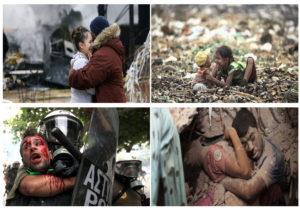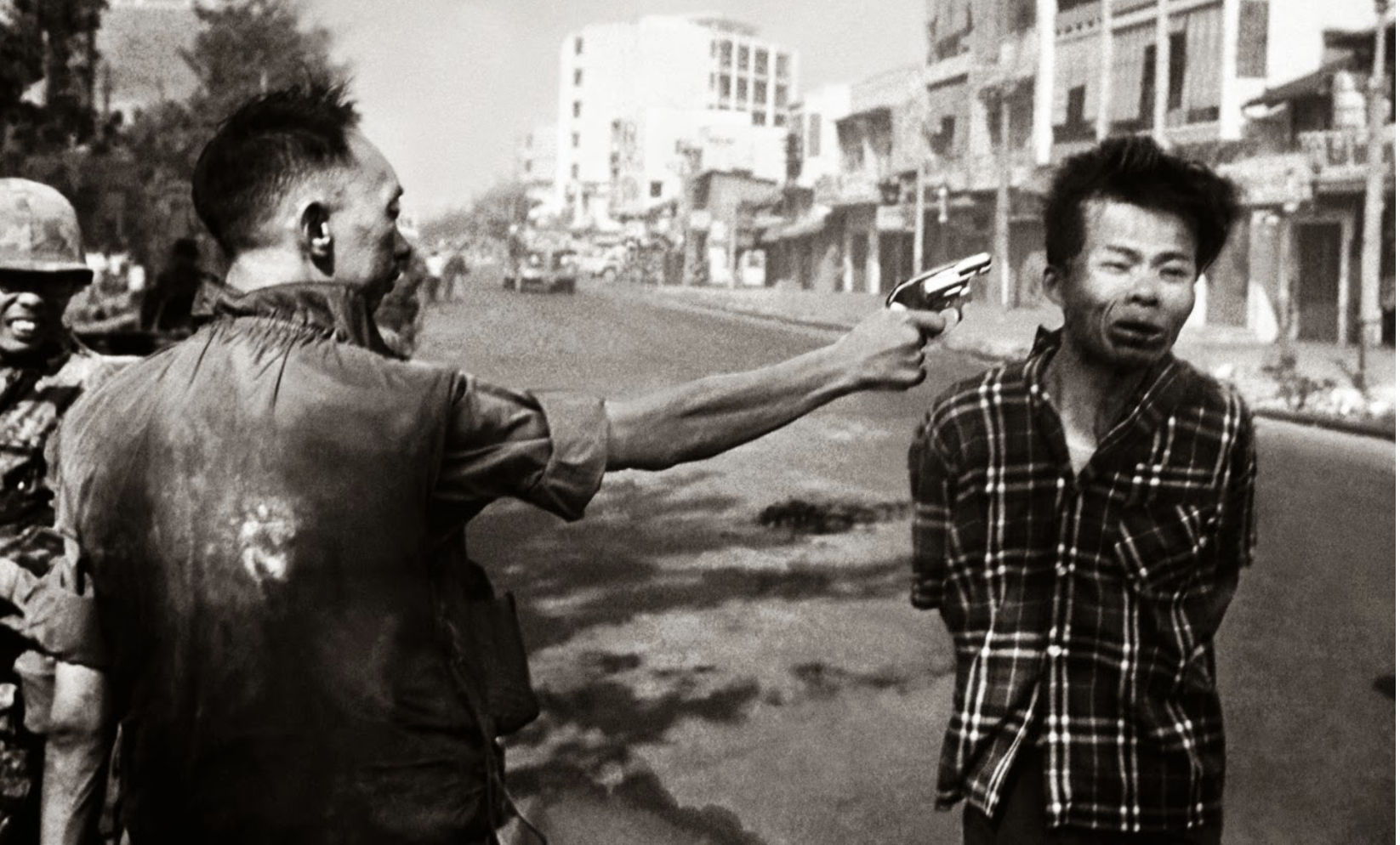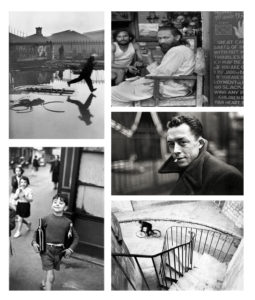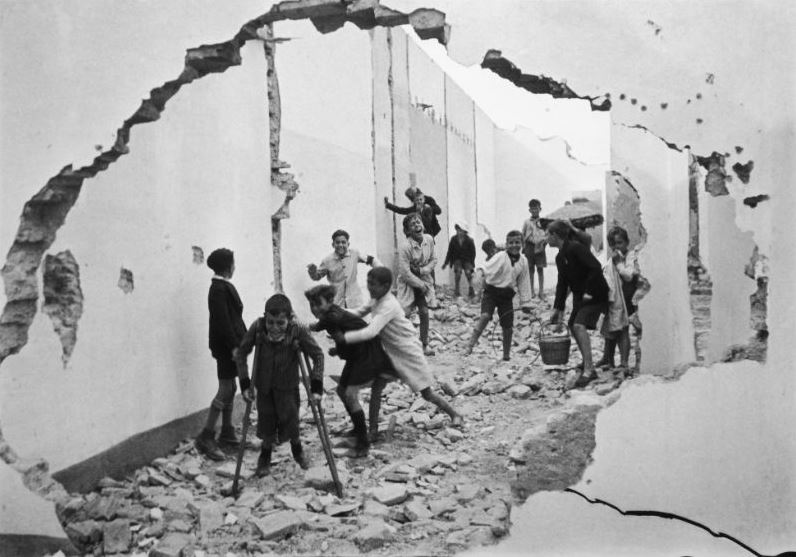Henri Cartier-Bresson was a French humanist photographer born August 22, 1908, in Cantaloup France, he is considered to be the master of candid photography. He was one of the first photographers who reordered the use of street photography and photojournalism. 1923 he acquired his hand-held Leica camera with a 50mm lens.The camera gave the opportunity to capture intimate moment was essential in overcoming the formal and unnatural behaviour of those who were aware of being photographed, this was the start of his candid photography.
1923 he acquired his hand-held Leica camera with a 50mm lens.The camera gave the opportunity to capture intimate moment was essential in overcoming the formal and unnatural behaviour of those who were aware of being photographed, this was the start of his candid photography.
Mood Board
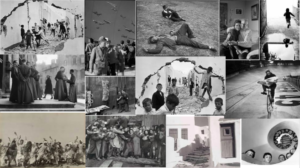
Magnum Photographers
“Magnum is a community of thought, a shared human quality, a curiosity about what is going on in the world, a respect for what is going on and a desire to transcribe it visually – Henri Cartier-Bresson
In 1947, after Second World War, four of the leading photographers at the time created an alliance to document, world events, people, places and different cultures with a message behind the image.Henri Cartier-Bresson, Robert Capa, George Rodger and David Seymour created The Magnum Photos agency. Magnum Photos are known to be some of the most renowned photos and images that have changed the world, most of the icon images in the world have been taken by a Magnum photographer. Magnum photographers are a rarity and the agency is self-selecting; membership is a minimum four-year process and is considered the finest accolade of a photographer’s career. Magnum is one of the first photographic cooperatives, owned and administered entirely by members. The staff serve a support role for the photographers, who retain all copyrights to their own work. Although it has been asserted that the name “Magnum” was chosen because the founding members always drank a bottle of champagne during the first meetings.
Image Analysis
The image has been taken in black and white, which could have been to emphasize the silhouette of the mand and woman and the centre focus of the image which is the man jumping across the centre frame of the image. The image has been taken on a fast shutter speed as the man jumping has been captured mid-shot in and is very sharp. The image has has been taken using the natural lighting that was there at the time, which seems to be a very dull and grey day which helps to create a nice tonal range with the darkest colors bring in the silhouettes of the people and then having a range of colours in the sky from the natural environment. Visually the image could be spilt up into different sections would still be acceptable images by themselves, in the image, there are many harsh lines ( the building in the left-hand side of the image, the Elifle tower which then joins to create another line with the man’s legs). The image was taken in Paris in 1989 by Henri Cartier Bresson
street photography is unmediated, documenting every day life. The subjects in the photos are often not expecting to be photographed or do not notice it at all. They are often taken in the street but are not limited to this, as long as they are un-staged pictures that tell us more about a persons life, personality and story. It originated from people documenting time when cameras were first invented and is now used as an educational and creative way to give people a different perspective on the society. Street photographs aim to capture a persons emotions and often portray a certain class or group of people.

 The image would have been taken on a normal shutter speed as the man is in focus, which suggest that the had stopped walking or was concentrating on something, whereas the truck that is in the back if the image is slightly blurry/out of focus. The image has a very neutral colour palette, which could be due to the snow which has blocked out the colour of the street colour palette the only real color in the image is the yellow from the truck on the street.
The image would have been taken on a normal shutter speed as the man is in focus, which suggest that the had stopped walking or was concentrating on something, whereas the truck that is in the back if the image is slightly blurry/out of focus. The image has a very neutral colour palette, which could be due to the snow which has blocked out the colour of the street colour palette the only real color in the image is the yellow from the truck on the street. Technically the image is very different from Saul’s the first reason this being is that Henri’s images is very sharp and clean, the image must have been taken on a very quick shutter speed to capture the boy jumping in mid air and not to get any blur from him jumping. Henri image is also in total black and white and nearly features the full scale of Ansel Adam’s zone system.
Technically the image is very different from Saul’s the first reason this being is that Henri’s images is very sharp and clean, the image must have been taken on a very quick shutter speed to capture the boy jumping in mid air and not to get any blur from him jumping. Henri image is also in total black and white and nearly features the full scale of Ansel Adam’s zone system. 1923 he acquired his hand-held Leica camera
1923 he acquired his hand-held Leica camera 


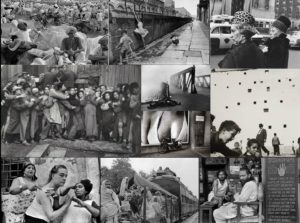 Henri Cartier-Bresson - was a French humanist photographer considered a master of candid photography. He pioneered street photography and viewed photography as capturing a decisive moment.
Henri Cartier-Bresson - was a French humanist photographer considered a master of candid photography. He pioneered street photography and viewed photography as capturing a decisive moment.
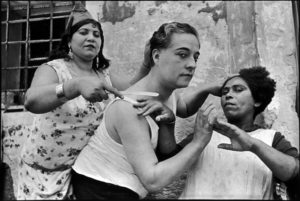 Technical - In order to capture a candid photograph of these women, Bresson would have taken this photo quickly to capture their natural expressions to create an authentic photograph. To keep the the photograph in focus, a fast shutter speed would have been used because Bresson would have had to move fast. Nothing in the photograph indicates any artificial lighting from flash - taken in daylight.
Visual - Rather than a shallow focus to create depth, the three subjects create depth in the photograph with the middle subject closest to the camera and the other two subjects further away, in a deep focus.
Contextual - The photograph was taken in 1933, Alicante Spain. Three tough looking sexually ambiguous people stared at the camera as Bresson took the shot. Different aspects indicate different things. The middle subject may be a man or a woman. The short hair seems masculine yet it is styled to be crimped which suggests otherwise. Their body shape could be either that of a woman or a man and their make-up is done - which is traditionally referred to as a stereotypical female product.
Conceptual - The background of the photograph and the clothes of the subjects suggests the photograph was taken in an area of poverty or of less privilege. The three subjects have been interpreted as prostitutes by others which fits in with other photographs Bresson took at this time.
Technical - In order to capture a candid photograph of these women, Bresson would have taken this photo quickly to capture their natural expressions to create an authentic photograph. To keep the the photograph in focus, a fast shutter speed would have been used because Bresson would have had to move fast. Nothing in the photograph indicates any artificial lighting from flash - taken in daylight.
Visual - Rather than a shallow focus to create depth, the three subjects create depth in the photograph with the middle subject closest to the camera and the other two subjects further away, in a deep focus.
Contextual - The photograph was taken in 1933, Alicante Spain. Three tough looking sexually ambiguous people stared at the camera as Bresson took the shot. Different aspects indicate different things. The middle subject may be a man or a woman. The short hair seems masculine yet it is styled to be crimped which suggests otherwise. Their body shape could be either that of a woman or a man and their make-up is done - which is traditionally referred to as a stereotypical female product.
Conceptual - The background of the photograph and the clothes of the subjects suggests the photograph was taken in an area of poverty or of less privilege. The three subjects have been interpreted as prostitutes by others which fits in with other photographs Bresson took at this time.
